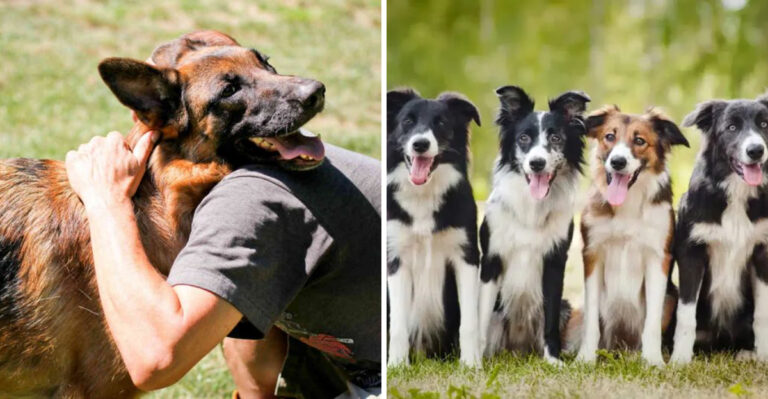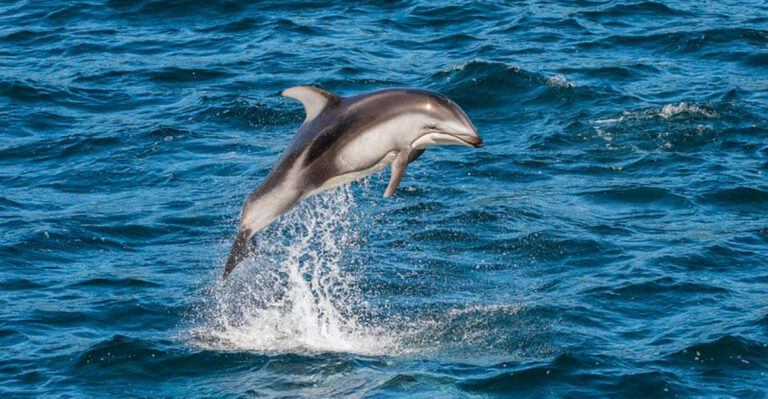The Extinct Hyaenodon Is A Fearsome Predator From Prehistoric Times

Long before lions and wolves ruled the land, a terrifying predator named Hyaenodon dominated ancient landscapes.
This massive carnivore roamed Earth between 42 and 5.3 million years ago, sporting bone-crushing jaws and razor-sharp teeth that made it one of history’s most formidable hunters.
Despite its name suggesting a connection to modern hyenas, Hyaenodon belongs to an entirely different family of mammals that completely vanished from our planet millions of years ago.
Not Actually Related To Hyenas

Despite its misleading name, Hyaenodon shares no close family ties with modern hyenas. The name simply means “hyena-toothed” in Greek, referring to similarities in their dental structure.
Scientists classify Hyaenodon in the extinct Hyaenodontidae family, which disappeared completely from Earth millions of years ago. These creatures evolved separately from today’s carnivores in a fascinating example of convergent evolution – where unrelated animals develop similar traits to fill comparable ecological roles.
Modern hyenas belong to the Hyaenidae family and are actually more closely related to cats than to these ancient predators!
Massive Jaws That Could Crush Bones
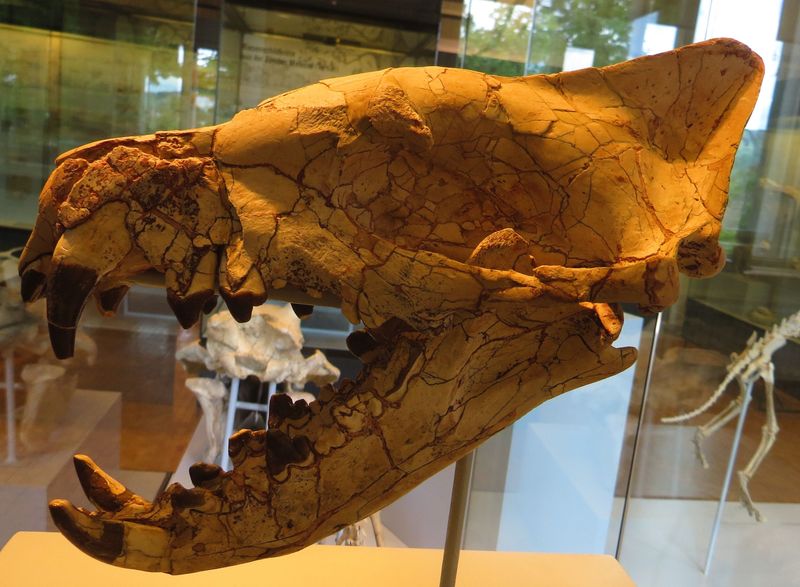
Armed with a crushing bite force that would make today’s predators jealous, Hyaenodon possessed specialized teeth and powerful jaw muscles designed for maximum destruction. Its mouth featured three pairs of carnassial teeth – specialized blade-like molars that worked like scissors to slice through meat and crush bone.
Most modern carnivores have just one pair of these specialized teeth. The extra pairs gave Hyaenodon exceptional cutting power throughout its jaw.
Fossil evidence shows deep wear patterns on these teeth, suggesting these creatures regularly devoured entire prey animals – bones and all – leaving virtually nothing behind.
Various Species Ranging From Fox To Bear Size
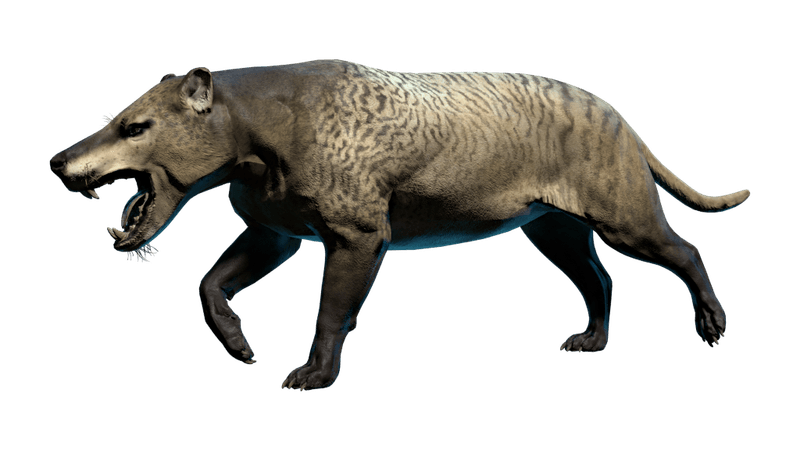
Hyaenodon wasn’t just a single animal but an entire genus containing numerous species that varied dramatically in size. The smallest members, like Hyaenodon microdon, were roughly fox-sized predators weighing only about 10-15 pounds.
Mid-sized species reached wolf-like proportions. The truly impressive giants of the family, particularly Hyaenodon gigas, grew to bear-like dimensions – standing nearly 5 feet at the shoulder and potentially weighing up to 500 pounds!
This size diversity allowed different Hyaenodon species to occupy various ecological niches, hunting prey of different sizes across their habitats without directly competing with each other.
Global Distribution Across Three Continents
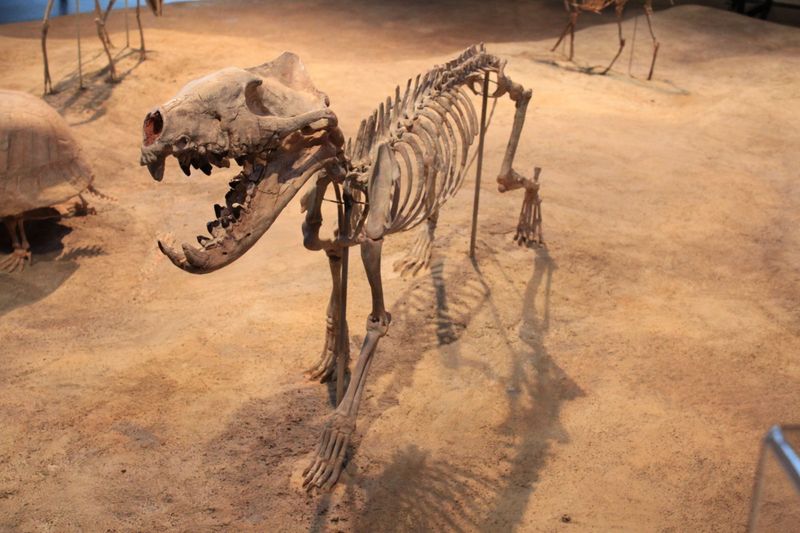
Fossils tell us these fearsome hunters enjoyed remarkable success across the ancient world. Paleontologists have unearthed Hyaenodon remains throughout North America, Europe, and Asia, revealing their impressive geographic range during the Oligocene epoch.
Their ability to thrive across such vast territories speaks to their adaptability as apex predators. Different species evolved specific traits suited to their particular environments – from dense forests to open plains.
Climate change eventually restricted their range as Earth cooled and forests gave way to grasslands. This shift favored the rise of more specialized carnivores like early dogs and cats, ultimately contributing to Hyaenodon’s eventual extinction.
Brain Structure Reveals Hunting Strategies
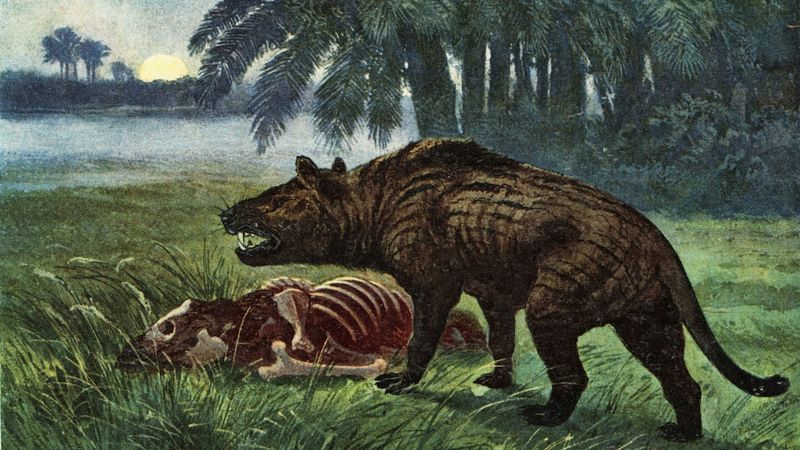
Examining rare Hyaenodon skull fossils has given scientists fascinating insights into how these predators perceived their world. CT scans reveal they possessed relatively small brains compared to their body size, with limited areas devoted to higher thinking.
However, the regions responsible for processing smell were exceptionally well-developed. This suggests Hyaenodon relied heavily on its sense of smell to track prey across ancient landscapes – much like modern wolves but potentially even more specialized.
Their brain structure indicates they were likely ambush predators rather than pursuit hunters, using their powerful sense of smell to locate prey before launching devastating surprise attacks.
Ruled Before The Rise Of Big Cats
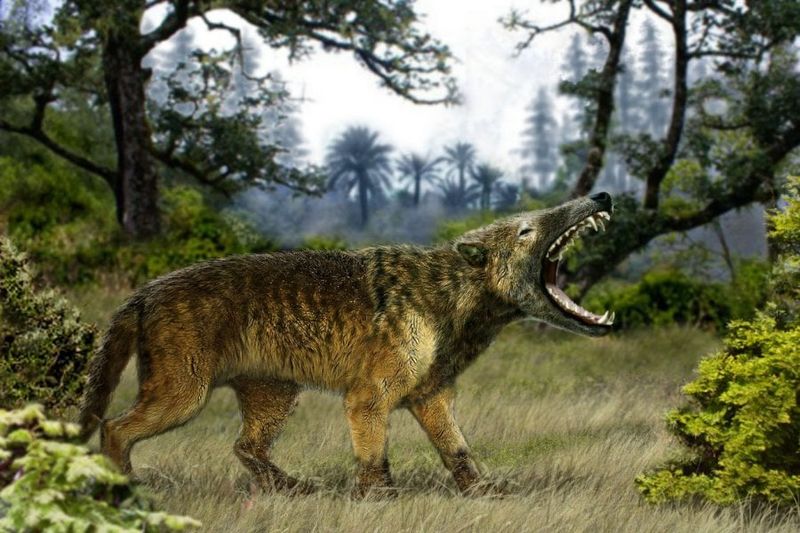
For millions of years, Hyaenodon dominated landscapes without facing competition from the predators we know today. These creatures reached their peak during the Oligocene epoch (34-23 million years ago), long before big cats, wolves, or bears evolved into their modern forms.
The absence of these familiar carnivores allowed Hyaenodon to occupy the top predator niche across vast territories. Early ancestors of cats and dogs existed during this time but remained small, specialized hunters that posed no threat to the mighty Hyaenodon.
Only after climate changes transformed ancient forests into grasslands did more modern predators begin to outcompete these prehistoric hunters.
Distinctive Running Style Unlike Modern Predators

Analysis of Hyaenodon’s leg fossils reveals a fascinating difference in how these predators moved compared to today’s carnivores. Their legs extended from the sides of their bodies rather than directly underneath – similar to modern crocodiles but less extreme.
This anatomical arrangement meant Hyaenodon couldn’t sustain the efficient long-distance running that wolves use to exhaust prey. Instead, they likely relied on powerful bursts of speed for short-distance ambush attacks.
Their unique leg structure also suggests they may have had a distinctive side-to-side gait different from any large predator alive today – a prehistoric swagger that would look alien to our modern eyes.
Surprisingly Long Evolutionary Success Story

Few prehistoric predators can match Hyaenodon’s impressive reign at the top of the food chain. These remarkable hunters first appeared in the fossil record during the late Eocene epoch around 42 million years ago and persisted until the early Miocene about 5.3 million years ago.
This incredible 37-million-year run makes them one of the most enduring mammalian predator groups in Earth’s history! For perspective, modern humans have existed for less than 300,000 years – making our time on Earth a mere blip compared to Hyaenodon’s dynasty.
Their adaptability across changing climates and environments explains this extraordinary evolutionary success.
Females Likely Dominated Hyaenodon Society

Fossil evidence suggests a fascinating social structure where female Hyaenodons may have been larger and more dominant than males – similar to spotted hyenas today. Paleontologists have identified potential sexual dimorphism in fossil specimens, with the presumed females having more robust skulls and stronger jaw muscles.
This physical advantage likely translated to social dominance, with females controlling access to the best hunting territories and food resources. Such a female-led hierarchy would have been unusual among large predators of the time.
Scientists theorize this arrangement evolved to ensure cubs received adequate protection and nourishment in a harsh prehistoric world.
Specialized Teeth For Different Prey Types
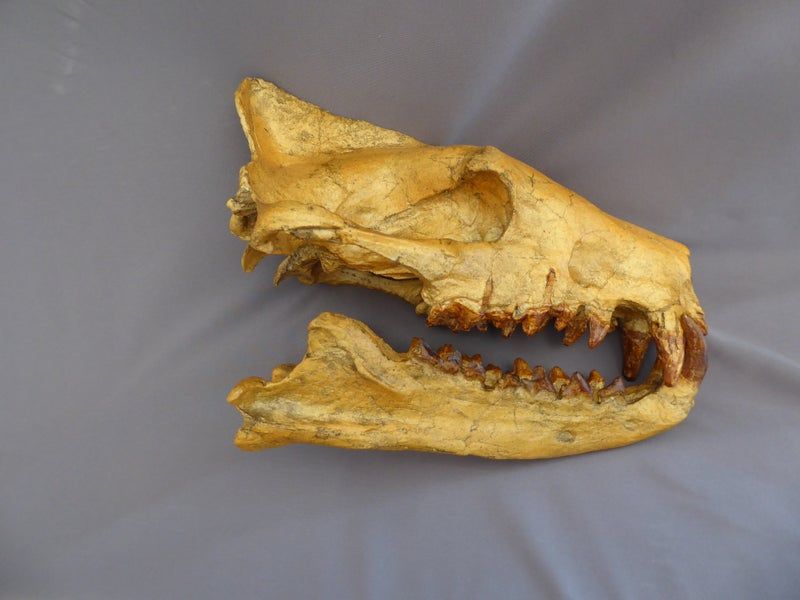
Beyond their famous bone-crushing abilities, Hyaenodon species evolved specialized dental adaptations based on their preferred prey. Smaller species had needle-like teeth perfect for piercing the tough hides of early hoofed mammals, while larger species developed thicker teeth better suited for tackling larger, more robust prey.
Some species even showed adaptations for consuming turtles and other armored creatures! The varied dental equipment across the Hyaenodon family demonstrates their evolutionary flexibility.
This dental specialization allowed different Hyaenodon species to coexist in the same environments by focusing on different food sources – a strategy that contributed to their long-term success as predators.
Final Extinction Linked To Climate Change
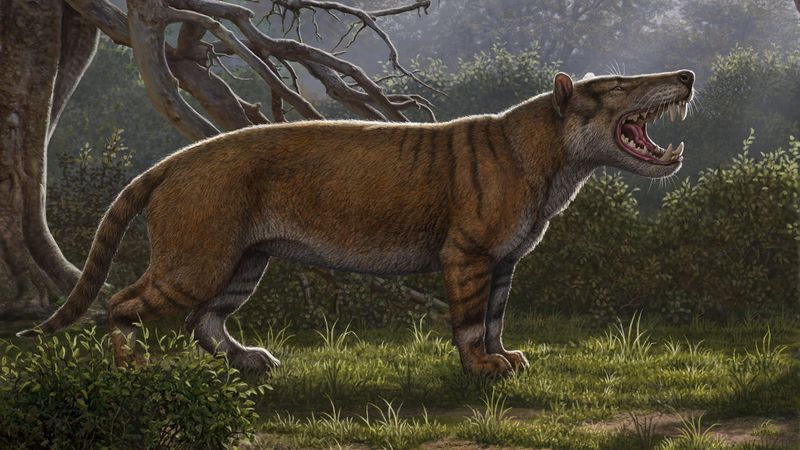
After ruling as top predators for millions of years, Hyaenodon’s reign came to an end due to dramatic environmental shifts. Global cooling during the late Oligocene and early Miocene epochs transformed vast forests into open grasslands – habitats that didn’t favor Hyaenodon’s hunting style.
Their somewhat sprawling leg structure proved disadvantageous in these new environments. Meanwhile, early cats, dogs, and other modern carnivores with legs positioned directly under their bodies gained the evolutionary upper hand with more efficient running abilities suited to open terrain.
By about 5.3 million years ago, the last Hyaenodon species disappeared, ending one of nature’s most successful predator dynasties.



